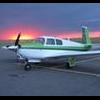cruise settings?
-
Members Online
- Gilt
- C.J.
- Brian2034
- Skyland
- IvanP
- wburger1
- eman1200
- Rmfriday
- Lincoln
- acekng1
- M20F
- SacFireMedic
- Raistlin
- TheSoup
- kortopates
- Wingover
- midlifeflyer
- neilpilot
- Paul Thomas
- TCC
- Bunti
- donkaye
- RobertGary1
- Ragsf15e
- jrwilson
- Florian Guthardt
- Falcon Man
- redbaron1982
- Rwsavory
- vik
- 47U
- hollisterjetcenter
- PeytonM
- phrogpilot73
- Flymu2
- Sheriff23
- cliffy
- dvictory


Recommended Posts
Join the conversation
You can post now and register later. If you have an account, sign in now to post with your account.